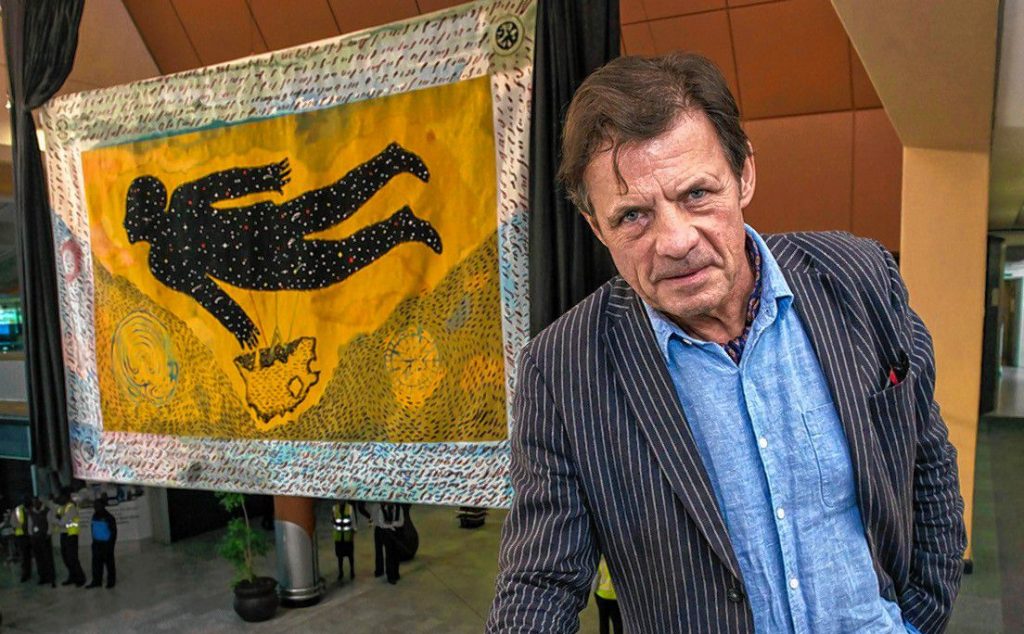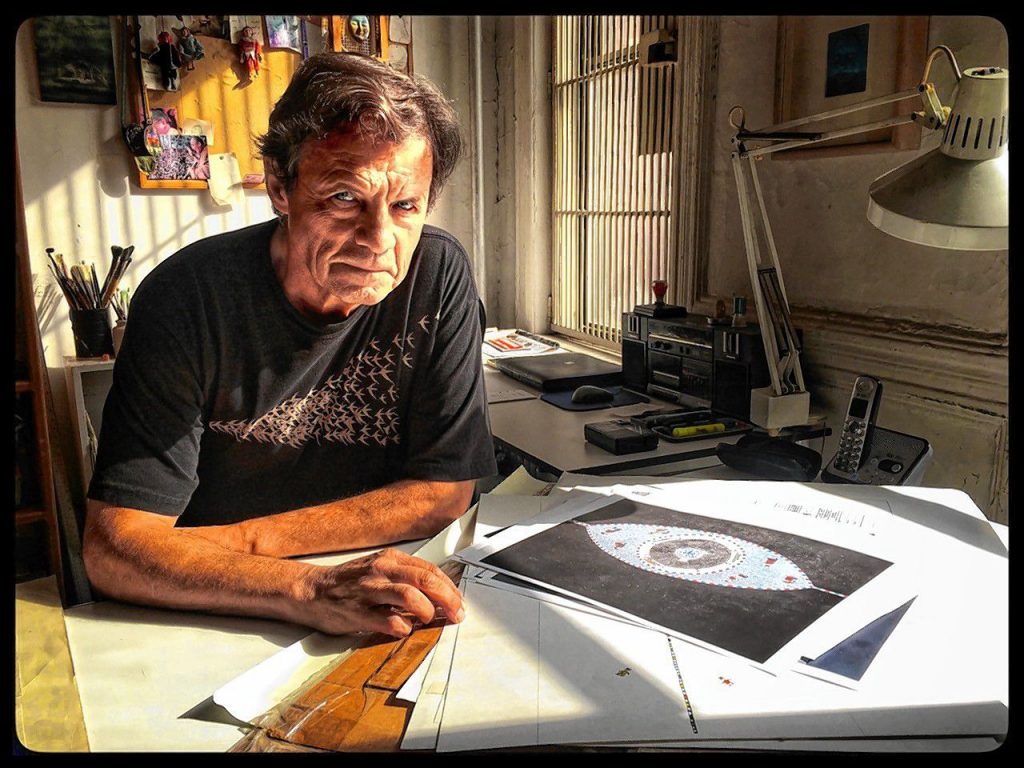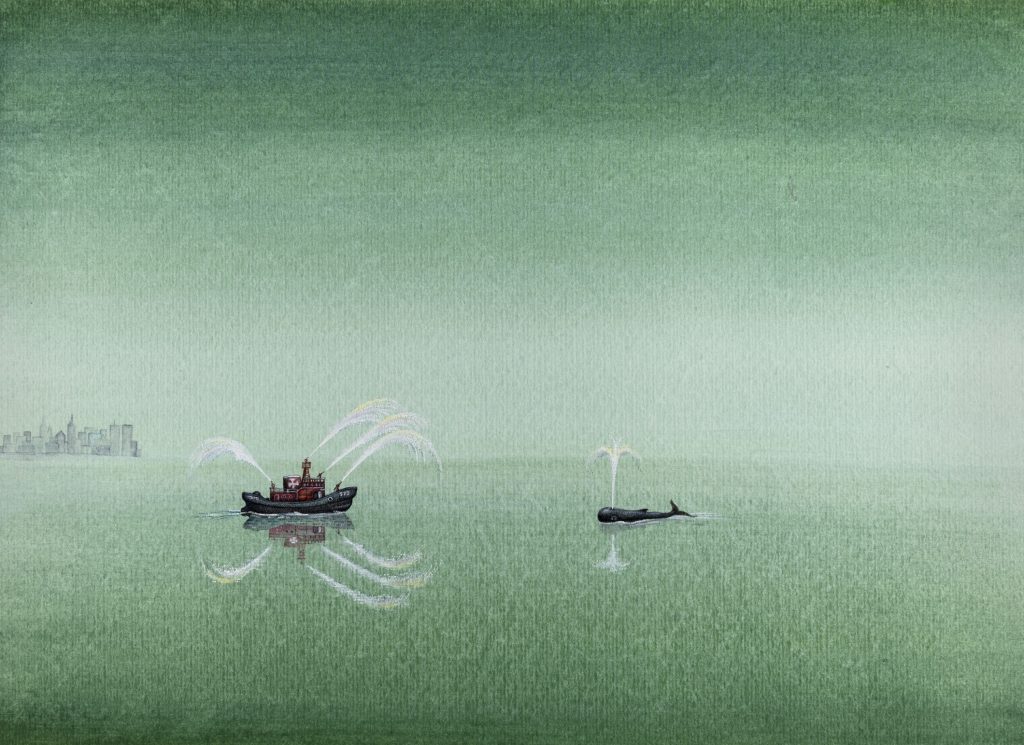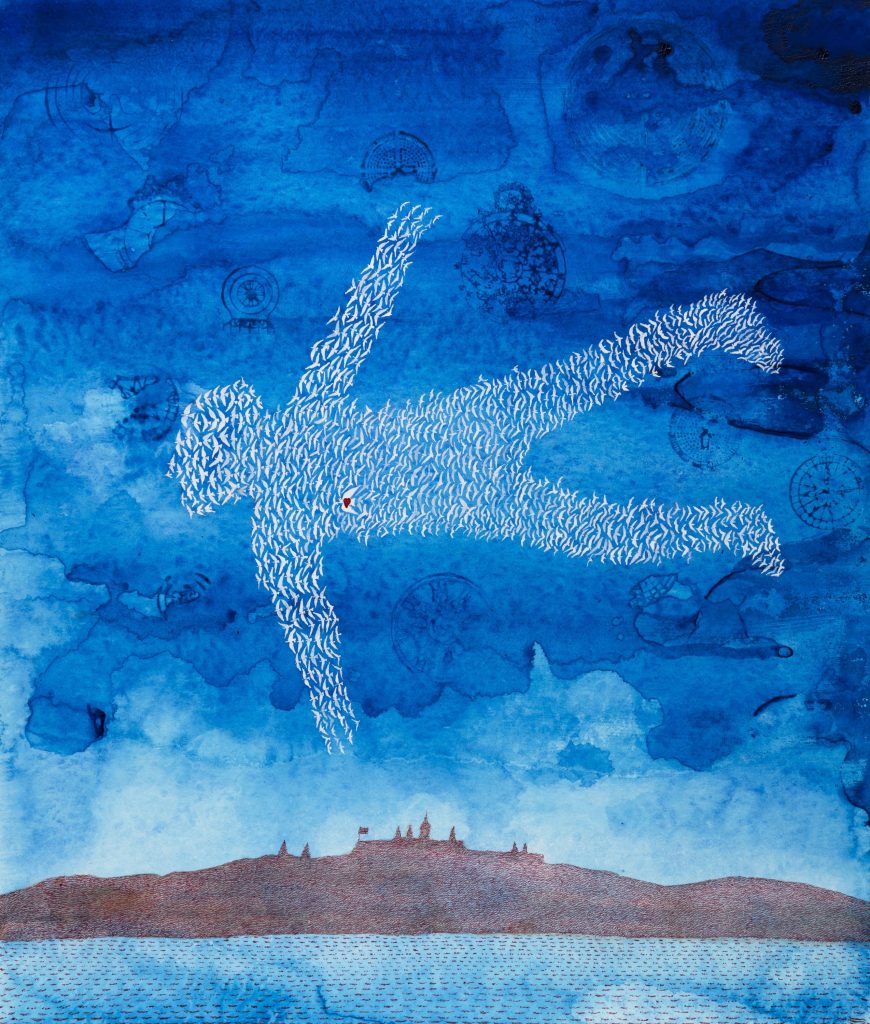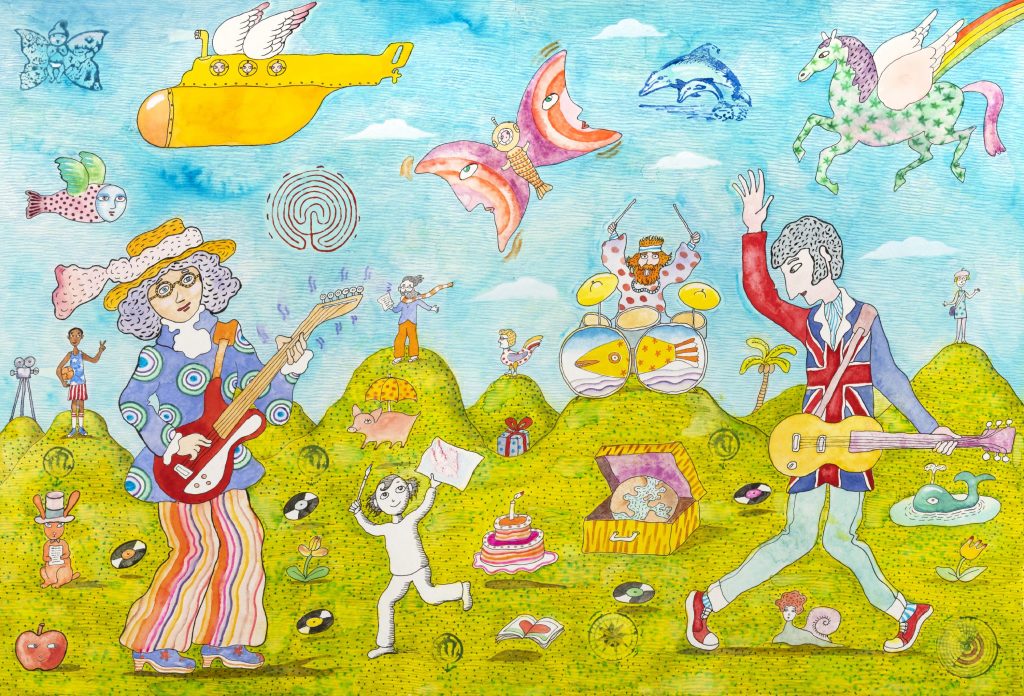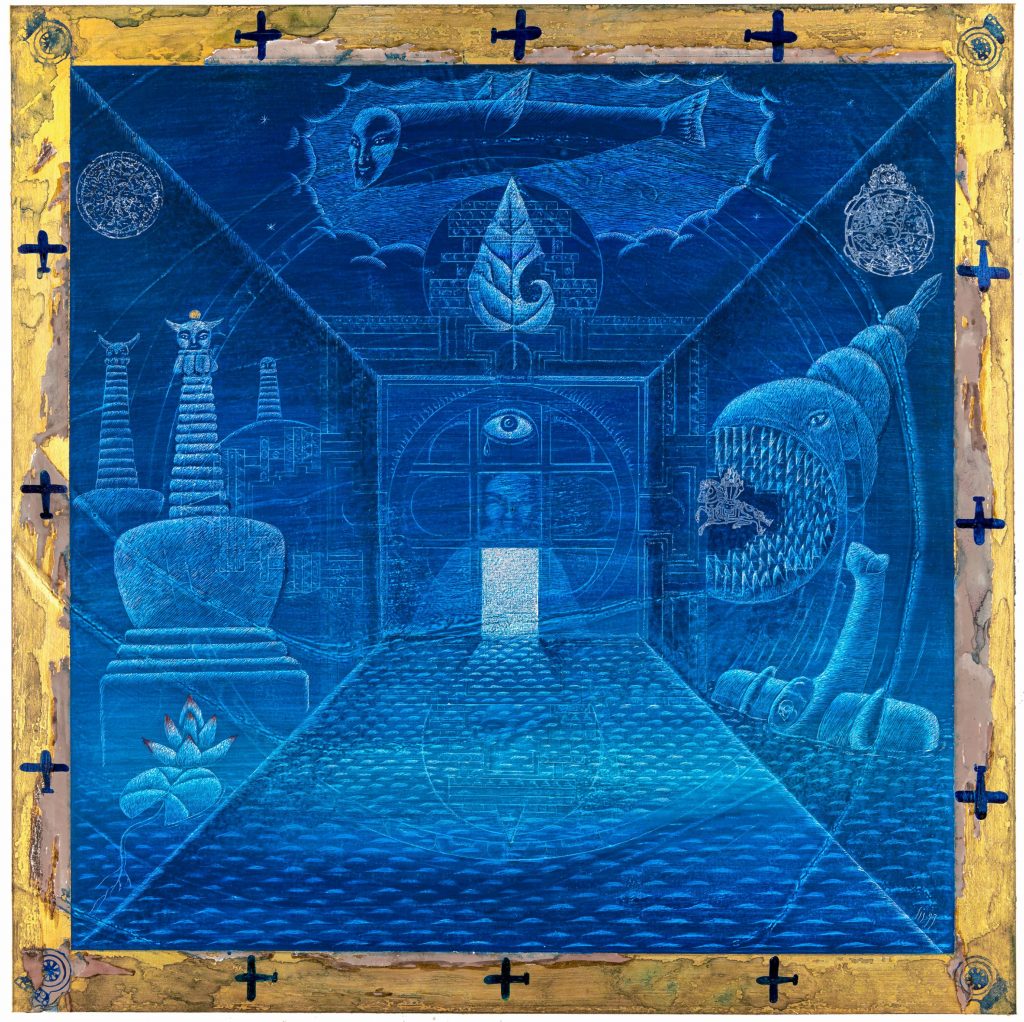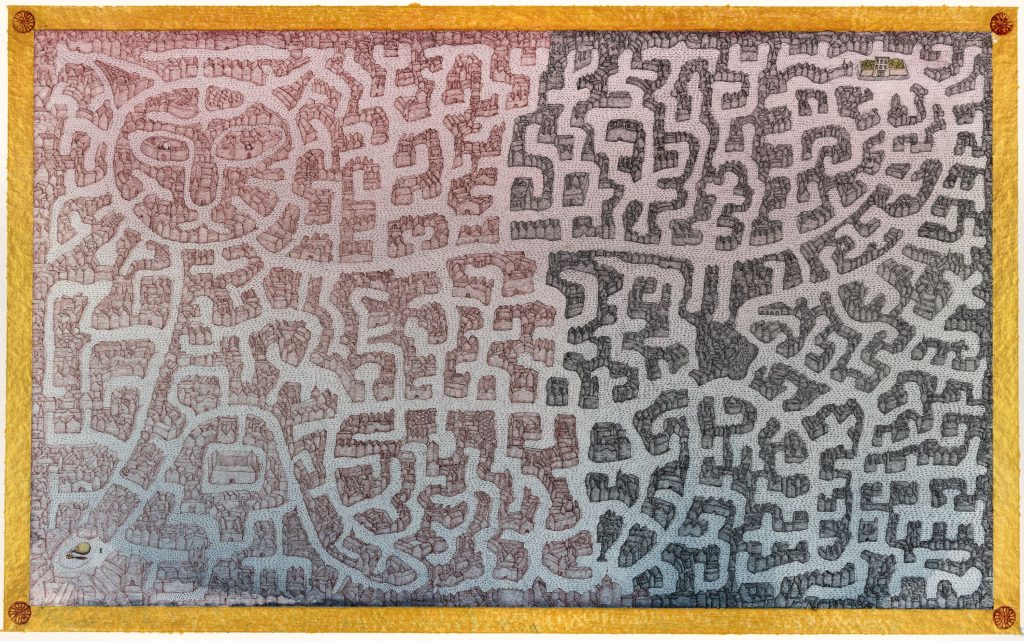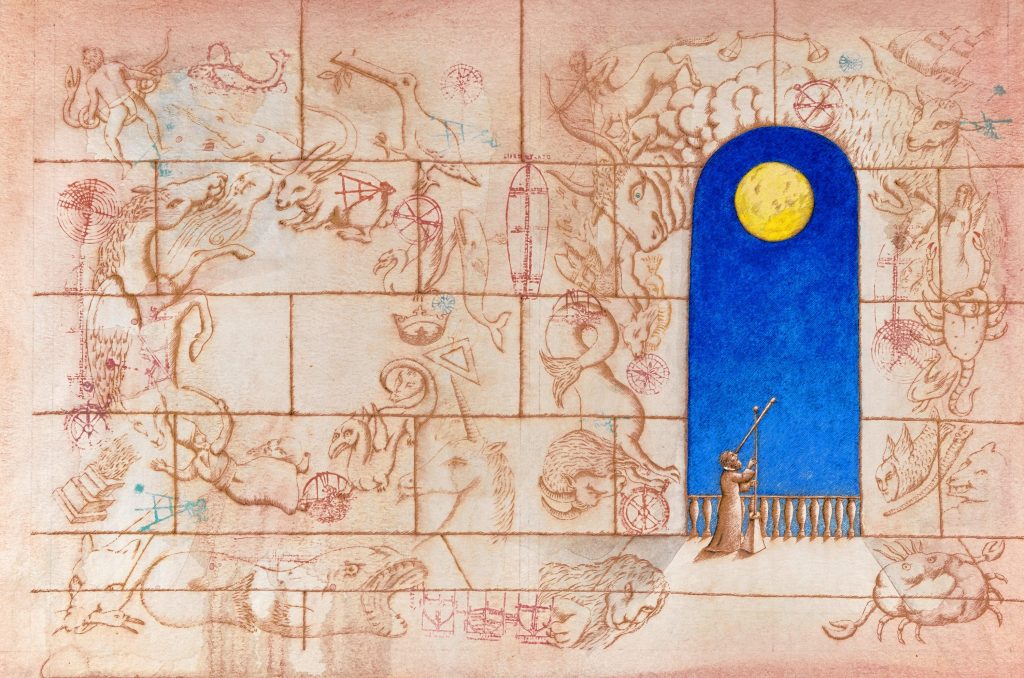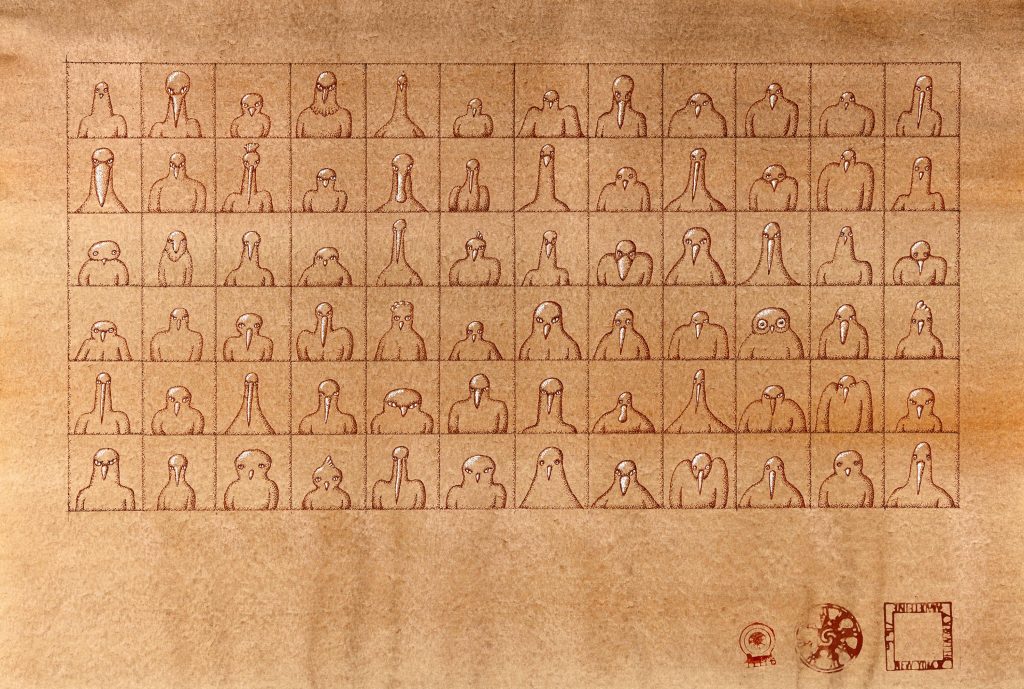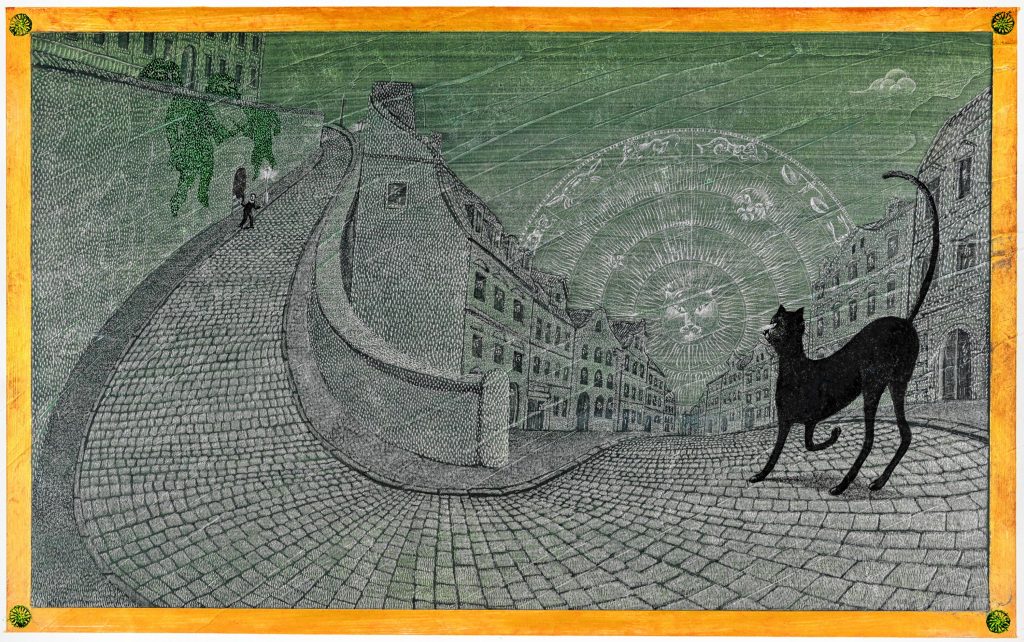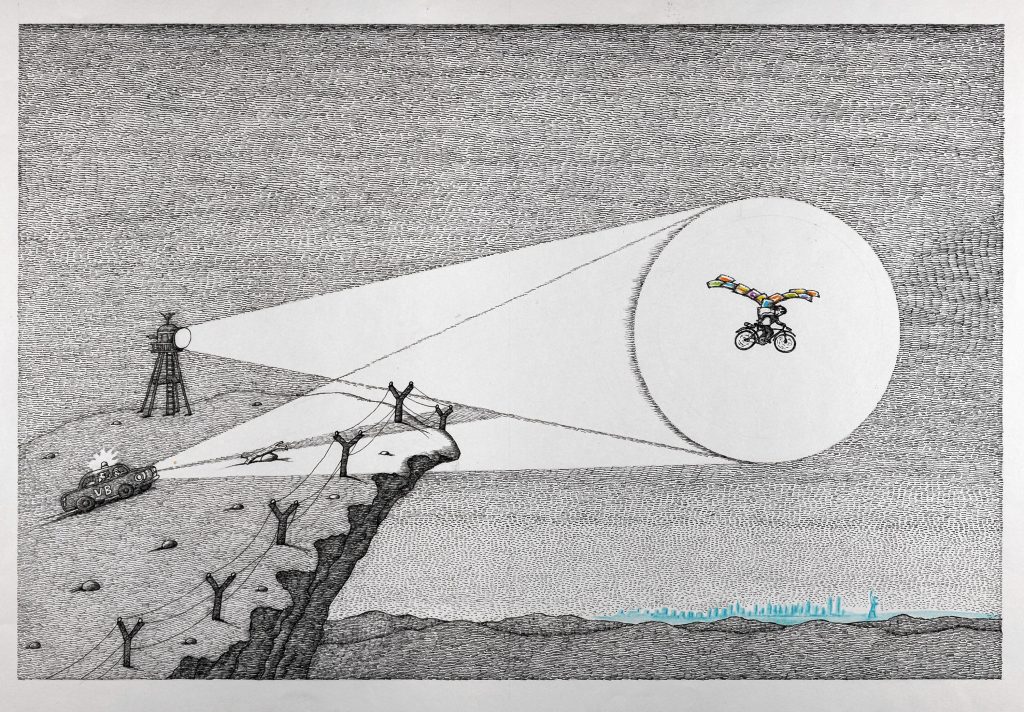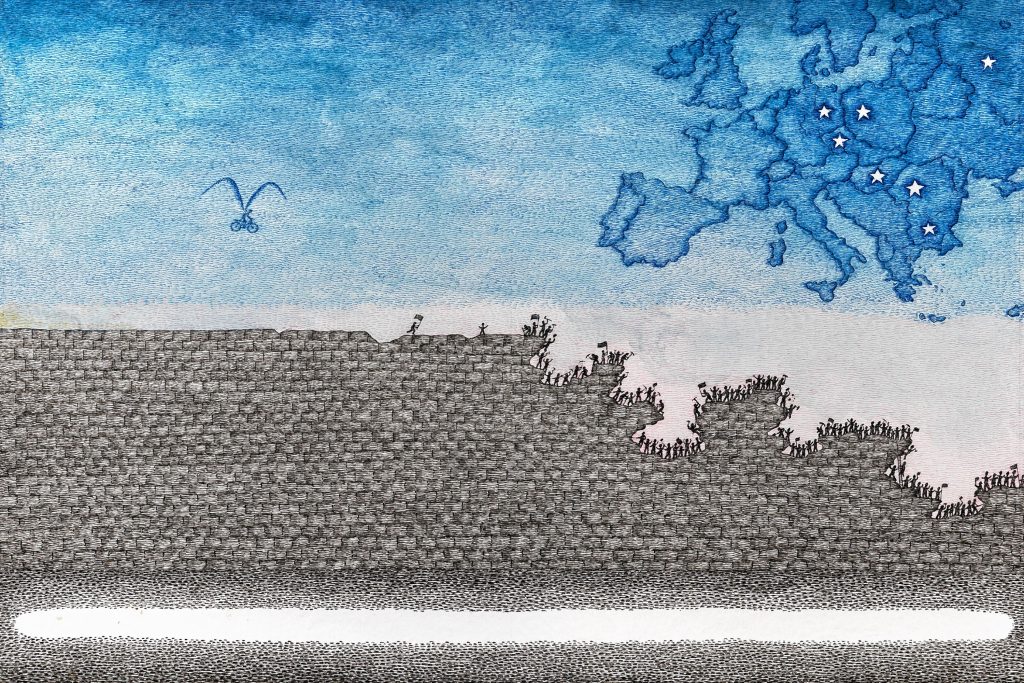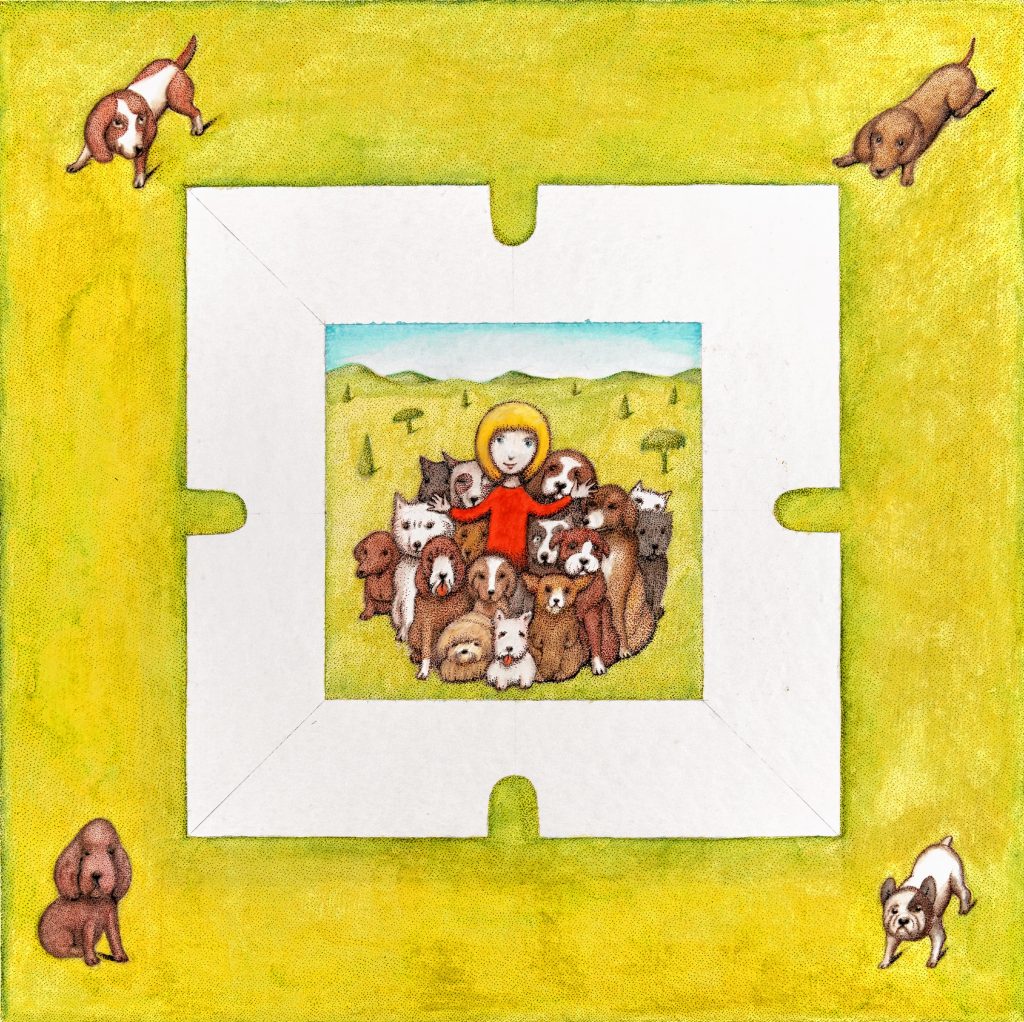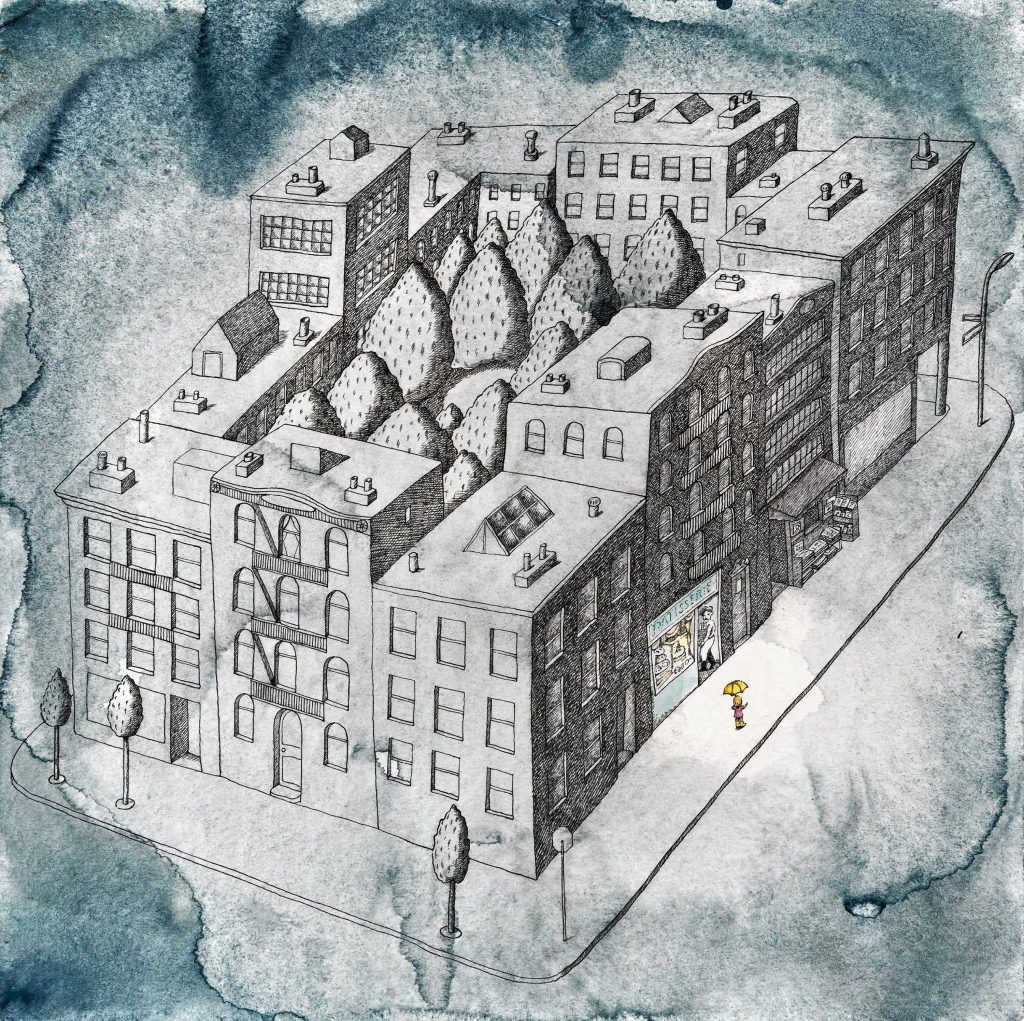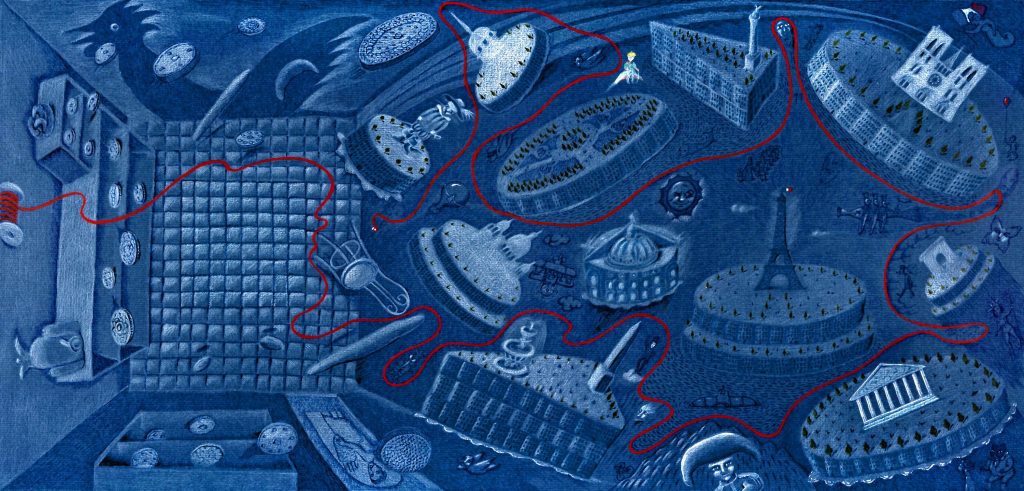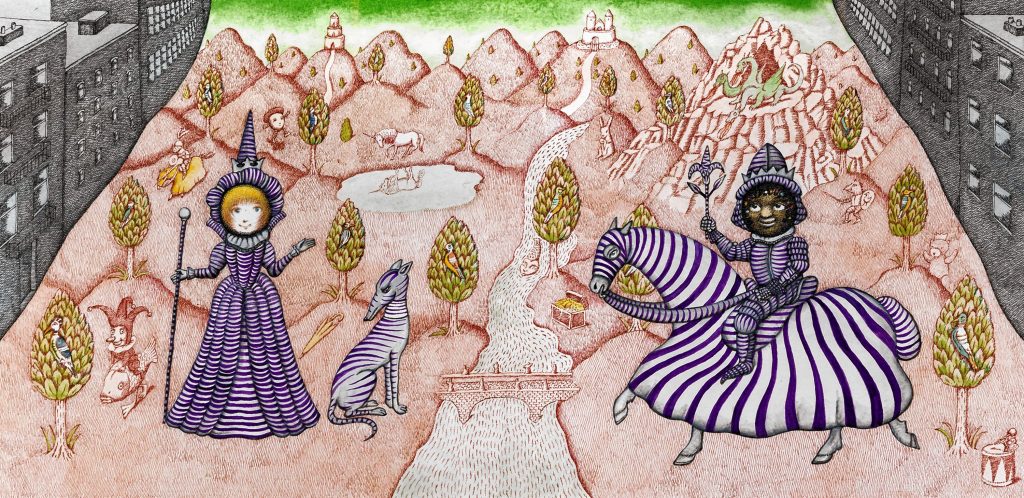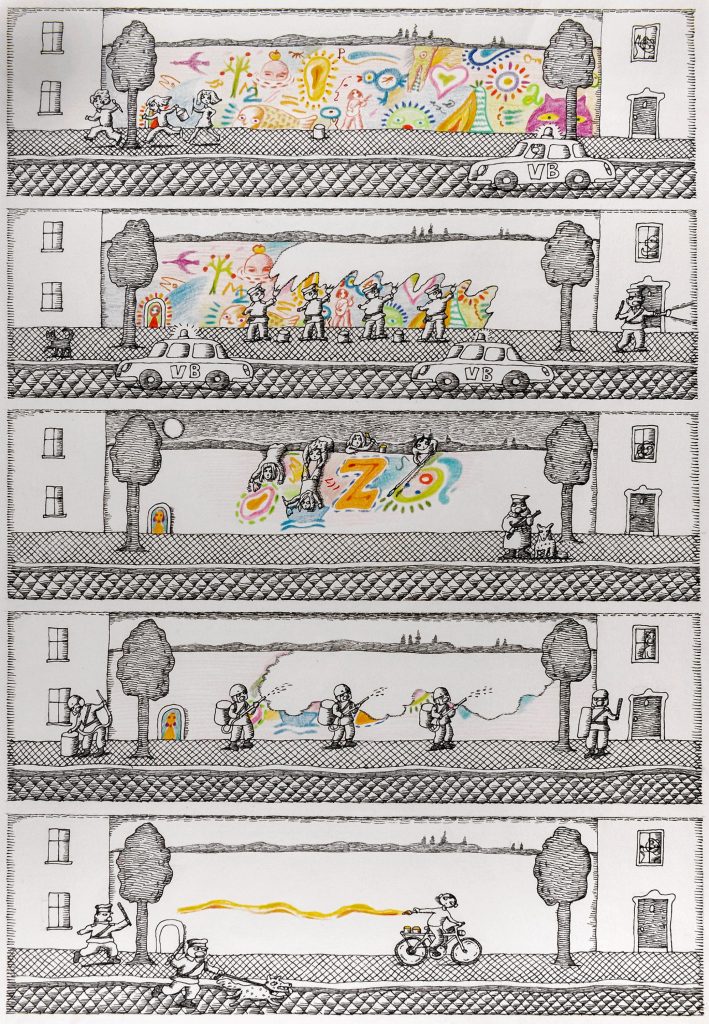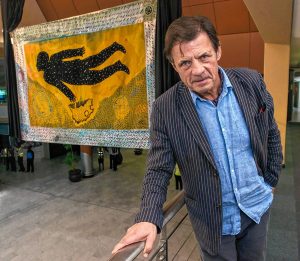Aptly named and thoughtfully installed, The Picture Book Odyssey of Peter Sís (at the Eric Carle Museum of Picture Book Art through October 27), lets us follow the artist’s footsteps on a pathway that is anchored in fact but also spins off into fantasy.
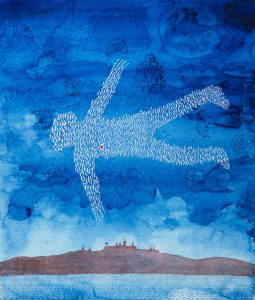
Peter Sis, Flying Man, tapestry design honoring Czech Republic President Vaclav Havel commissioned by Vaclav Havel Airport Prague, 2011. Collection of the artist. © Peter Sis.
Born in Czechoslovakia in 1949, Sís grew up in Prague, when the city was firmly entrenched behind the Iron Curtain. His filmmaker father and artist mother encouraged their son to draw anything (and everything!) that caught his interest. But outside the home, he faced rules and regulations the Communist regime imposed, even on a schoolchild’s flights of fancy. Seizing on a career in film animation for opportunities to travel, Sís was in Los Angeles making a documentary about the Olympics when the Soviet Union decided to boycott the 1984 summer games. He was recalled, but resisted, to seek political asylum and become a U.S. citizen.
Aspects of his trajectory, chafing at politically-imposed limits and boundaries, weave through his non-fiction picture book biographies. Incorporating timelines, detailed maps, and diary excerpts, the biographies depict voyages of discovery: the ends-of-the-earth adventures of French pilot Antoine de Saint-Exupéry, Czech arctic explorer Jan Welzl, and cross-Atlantic navigator Christopher Columbus; the paradigm-shifting science of Galileo Galilei and Charles Darwin.
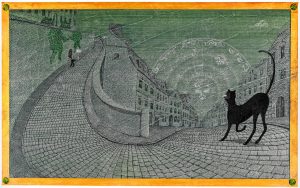
Peter Sis, Illustration for The Three Golden Keys (Doubleday). Collection of the artist. © 1994 Peter Sis.
Starry Messenger: Galileo Galilei (1996) recounts the life of the seventeenth-century Italian scientist, mathematician, and astronomer who challenged the then-current belief that the earth centered the universe. Sís tells his story in simple text spelled out in Roman letters. For more advanced readers, he includes additional information in elegant script. Dominant blue tones and repeated circular forms combine to suggest celestial imagery. Other fact-filled biographies also convey a sense of wonder. “I am always trying to follow the path of someone who went someplace and saw something amazing,” Sís explains.
Sís retraces his own path in a trio of autobiographical books. Prague is one of the world’s most beautiful cities, but for the young Sís, “Well, it was the place I grew up in.” After seeking asylum in the West, he feared he would never see Prague again. But with the fall of the Soviet Union, he returned to Czechoslovakia with his American passport. In his book about Prague, The Three Golden Keys (1994), “I became an explorer going back to my own house,” he says.
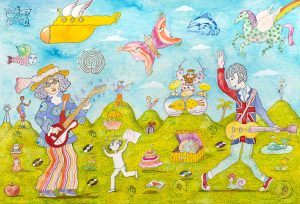
Peter Sis, Illustration for The Conference of the Birds (The Penguin Press). Collection of the artist. © 2011 Peter Sis. Used by permission of Penguin Press, an imprint of Penguin Publishing Group, a division of Penguin Random House LLC. All rights reserved.
He remembers the Prague of his youth as “always a little scary”: looming statues and shadows, water dripping from gray buildings. In the book’s artwork, he conveys this ghostly effect by scratching lines into a dark painted surface. He also recalls a black cat that frightened him as it ran through the streets at night. Re-appearing years later in the book, the black cat becomes a graceful, enigmatic guide that connects stories in sites scattered around the city.
Tibet: Through the Red Box (1998) reaches back to mingle stories of Sís’s father’s travels in Tibet with a young boy’s memories. When Sís was a little boy, his father was drafted into the army film unit and sent to China to make a documentary about building a highway into a remote area (but also known as Tibet). “My father had no idea what he was getting into. He told my mother he would be back by Christmas, and he was, but it was Christmas three years later!” Filming the construction blasting through the Himalayan Mountains was dangerous work, and in a snafu involving a landslide, the film crew got lost. Sís’s father wandered in Tibet for two years, stumbling into the forbidden city of Lhasa and meeting the 18-year-old Dalai Lama.
When his father finally returned, Sís didn’t recognize him. Maybe to re-establish bonds with his children, he told them tales of his travels. “For me, they were like fairy tales,” Sís recalls, “opening my fantasy to faraway places like Tibet and China.” The father stored his travel diaries in a red lacquer box, and bequeathed the box and the stories to his son. Years later, Sís presented the book about his father’s adventures to the Dalai Lama (now much older and living in exile), who signed it and blessed it.
The Wall: Growing Up Behind the Iron Curtain (2007) became more overtly political. It was originally conceived as “little stories of little children” with gentle humor detailing a family trip. Sketchbooks show initial page designs, with images of the family along the bottom of each page, like a comic strip or a TV news crawl. But Sís’s editors pushed for a more serious, complex book. The artwork reflects the content as color follows concept. Black and white drawings seem punctured by red splashes of ubiquitous Communist symbols and youth group scarves. But the illustration of the Prague Spring explodes with rainbow color and psychedelic pattern that is more Peter Max than Karl Marx. “It was the most difficult book of all. That book took four years,” he says.
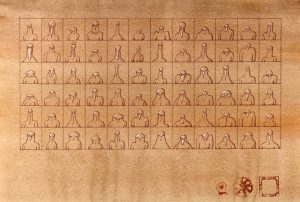
Peter Sis, Illustration for The Conference of the Birds (The Penguin Press). Collection of the artist. © 2011 Peter Sis. Used by permission of Penguin Press, an imprint of Penguin Publishing Group, a division of Penguin Random House LLC. All rights reserved.
One challenge posed by The Wall was how to handle complicated pros and cons of growing up behind the Iron Curtain. Another challenge was his labor-intensive mode of making art. Before making picture books, Sís worked as an illustrator for the New York Times, and developed a unique style that entailed defining the image in little dots. “Hundreds and thousands of little dots,” he emphasizes. “It became my way of expressing myself.”
Currently, he is working on a book about Nicholas Winton, who rescued 669 Jewish children from Nazi persecution by helping them emigrate from Czechoslovakia to Great Britain—another journey towards freedom. In the last 20 years, Sís has worked in public art, partnering with Amnesty International’s Art for Amnesty program to create tapestries in support of human rights around the world. Based on his watercolor paintings and woven in southern France, some of these tapestries are installed in international airports in Prague, Cape Town, and Dublin Other large-scale woven works focus on significant moments in the American Civil Rights Movement and were unveiled in 2017 at the Birmingham Civil Rights Institute in Alabama.
Looking back over his odyssey through illustration, picture book art, and art in public places, Sis traces some of the impetus back to his father’s adventures. “I wanted to be like my father, to travel, to go places, and of course to come back,” Sís says. Tibet: Through the Red Box is real-life, non-fiction, based on his father’s diaries. As Sís explains. “It’s a true story that is so fantastic people always ask me, ‘You made it up, right?’” But it’s all true, and when infused with an artist’s sense of wonder, it becomes all the more true.
The Picture Book Odysseys of Peter Sís is organized by The Eric Carle Museum of Picture Book Art, Amherst, and made possible with generous support from Macmillan Children’s Publishing Group.
The Picture Book Odyssey of Peter Sís, Eric Carle Museum of Picture Book Art, Amherst, on display through October 27.

